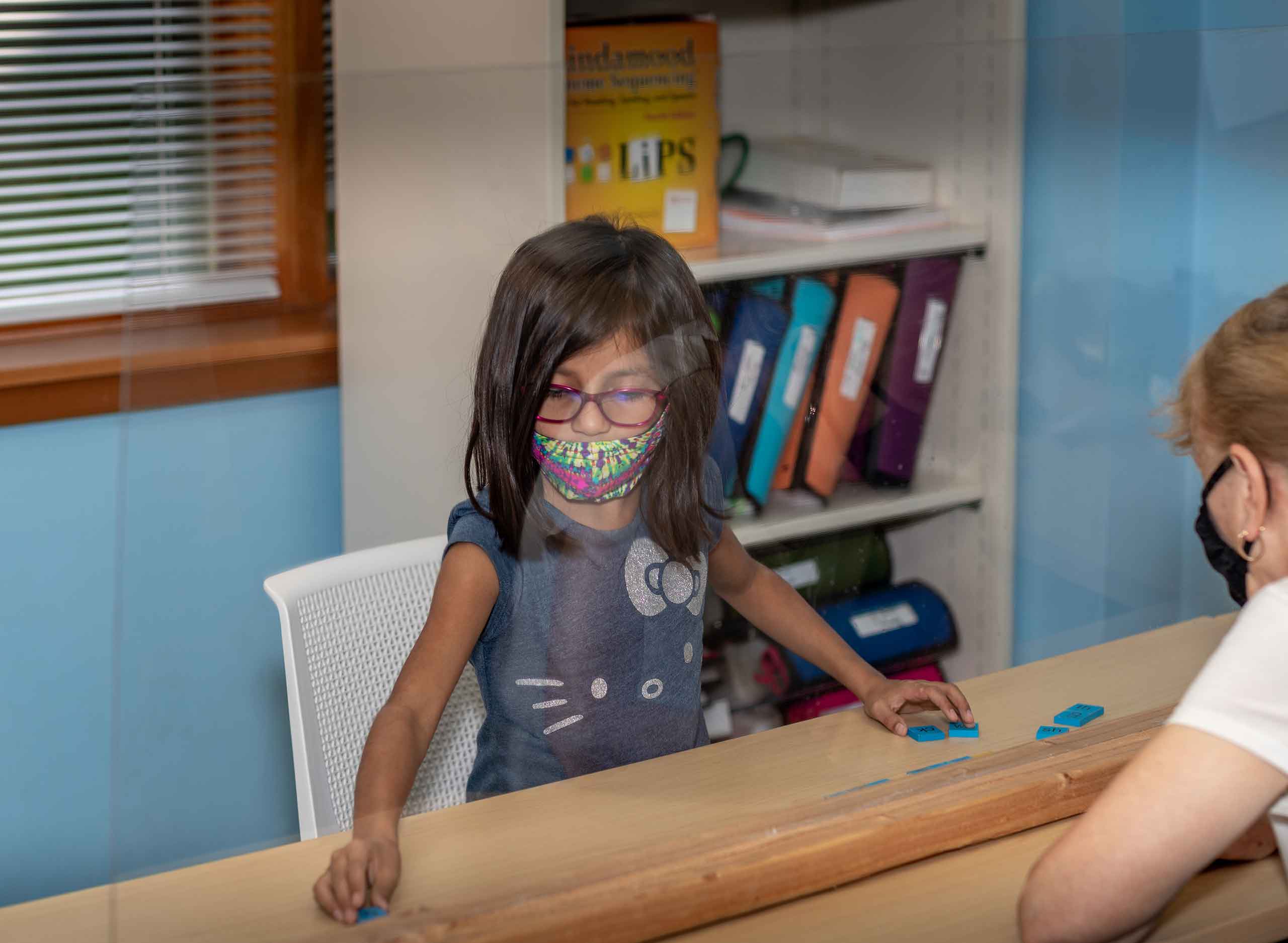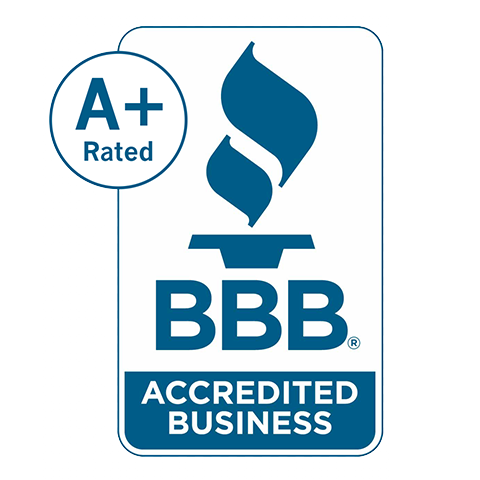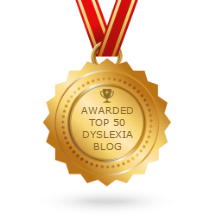Is it Dyslexia?

Dyslexia Means “Difficulty with Words”
Dyslexia is genetic, which makes reading, writing, spelling and sometimes math difficult despite having normal intelligence (and oftentimes very high intelligence). Many families struggle for years trying a variety of programs to help their child. Often times, little progress is made, as individuals do not outgrow dyslexia.
- At least 1 in 5 people can’t read or spell well because of dyslexia.
- Dyslexia means difficulty with words. People with dyslexia have trouble learning to read, write and spell, despite having average to above average intelligence.
- Although people with dyslexia struggle with academics, they may excel in science, sports, music, art and business.
- Students as young as 5 ½ years old can be screened for dyslexia with 92% accuracy according to the National Institutes of Health.
“Dyslexia is a neurologically-based, often familial, disorder which interferes with the acquisition and processing of language. Varying in degrees of severity, it is manifested by difficulties in receptive and expressive language, including phonological processing, in reading, writing, spelling, handwriting, and sometimes in arithmetic.
Dyslexia is not the result of lack of motivation, sensory impairment, inadequate instructional or environmental opportunities, or other limiting conditions, but may occur together with these conditions.
Although dyslexia is lifelong, individuals with dyslexia frequently respond successfully to timely and appropriate intervention.”
Revised Definition from the International Dyslexia Association.
Dyslexia Research
Dyslexia is the most common and most carefully studied of all learning disabilities, accounting for 80-90% of all learning disabilities, according to Dr. Sally Shaywitz, Yale Center for Dyslexia and Creativity. According to the National Institutes of Health (NIH) Summary Report in 1994, research shows that dyslexia is the most common learning disability, affecting at least 20 percent (1 in 5), of our population, with varying degrees of severity. Dyslexia is the most researched of all learning disabilities and is the leading cause of reading failure and school dropouts in our nation.
NIH Longitudinal Research
The National Institutes of Health conducted a longitudinal study by tracking 5,000 children at random from all over the country starting when they were 4 years old until they graduated from high school. The researchers had no idea which children would develop reading difficulties and which ones would not.
There were many theories at that time as to what caused reading difficulties, and which tests best predicted reading failure. The researchers tested these children 3 times a year for 14 years using a variety of tests that would either support or disprove the competing theories. But the researchers did NOT provide any type of training or intervention. They simply watched and tested.
From that research, they were able to determine which tests are most predictive of reading failure, at what age we can test children, and whether children outgrow their reading difficulties. This study also spawned numerous other NIH research projects. The results of these studies were released in 1994.- Susan Barton
National Institutes of Health Dyslexia Research Project
In the early 1980’s, the United States Congress mandated the National Institutes of Health (NIH) to research learning disabilities and answer 7 specific questions.
After conducting longitudinal research plus numerous studies on genetics, interventions, and brain function, we now have a great deal of independent, scientific, replicated, published research on dyslexia. Susan Barton

NIH Research Questions
NIH coordinated 18 top-notch university research teams throughout the United States to answer the following questions posed by Congress:
- How many children are learning disabled?
- Clearly define each specific type of learning disability.
- What causes each learning disability?
- How can we identify each learning disability?
- How long does each disability last? Map its developmental course.
- What is the best way to teach these children?
- Can we prevent any of these learning disabilities?
NIH investigated dyslexia first because it is the most prevalent learning disability.
– Susan Barton
NIH Dyslexia Study Summary Released in 1994
In the 1980’s, dyslexia research was conducted by the National Institutes of Health, at the direction of the United States Congress.
The following research results have been independently replicated and are now considered to be irrefutable.
- Dyslexia affects at least 1 out of every 5 children in the United States.
- Dyslexia represents the most common and prevalent of all known learning disabilities.
- Dyslexia is the most researched of all learning disabilities.
- Dyslexia affects as many boys as girls.
- Some forms of dyslexia are highly heritable.
- Dyslexia is the leading cause of reading failure and school dropouts in our nation.
- Reading failure is the most commonly shared characteristic of juvenile justice offenders.
- Dyslexia has been shown to be clearly related to neurophysiological differences in brain function. Dyslexic children display difficulty with the sound/symbol correspondences of our written code because of these differences in brain function.
- Early intervention is essential for this population.
- Dyslexia is identifiable, with 92% accuracy, at ages 5½ to 6½.
- Dyslexia is primarily due to linguistic deficits. We now know dyslexia is due to a difficulty processing language. It is not due to visual problems, and people with dyslexia do not see words or letters backwards.
- Reading failure caused by dyslexia is highly preventable through direct, explicit instruction in phonemic awareness.
- Children do not outgrow reading failure or dyslexia.
- Of children who display reading problems in the first grade, 74% will be poor readers in the ninth grade and into adulthood unless they receive informed and explicit instruction on phonemic awareness. Children do not mature out of their reading difficulties.
- Research evidence does not support the use of whole language reading approaches to teach dyslexic children.
- Dyslexia and ADD/ADHD are two separate and identifiable entities.
- Dyslexia and ADD/ADHD so frequently coexist within the same child that it is always best to test for both.
- Children with both dyslexia and ADD/ADHD are at dramatically increased risk for substance abuse and felony convictions if they do not receive appropriate interventions.
- The current discrepancy model testing utilized by our nation’s public schools to establish eligibility for special education services is not a valid diagnostic marker for dyslexia. – Susan Barton
NIH Dyslexia Research Results Released After 1994
- Word recognition difficulties are the most reliable indicators of reading disability in older children and adults. Slow, labored, and inaccurate reading of real and nonsense words in isolation are key warning signs.
- This laborious reading of single words frequently impedes the individual’s ability to comprehend what has been read, even though listening comprehension is adequate.
- Even among children and adults who score within normal ranges on reading achievement tests, many report that reading is so laborious and unproductive that they rarely read either for learning or for pleasure.
- Developing adequate awareness of phonemes is not dependent on intelligence, socio-economic status, or parents’ education, but can be fostered through direct, explicit instruction. Such instruction is shown to accelerate reading acquisition in general, even as it reduces the incidence of reading failure.
- Disabled readers must be provided highly structured programs that explicitly teach application of phonologic rules to print. Longitudinal data (studies that follow children over time) indicate that explicit systematic phonics instruction results in more favorable outcomes for disabled readers than does a context-emphasis (whole-language) approach. – Susan Barton
Warning Signs of Dyslexia
There may be a variety of reasons a student struggles academically. Problems may exist due to vision, hearing, or language processing differences, or a learning disability. If a student has normal to high intelligence, but an unexpectedly low reading ability, it could be dyslexia. If a student is dyslexic, their academic struggles are amplified in middle and high school, often causing them to fall behind academically.
If three or more of the traits below are occuring, it could be dyslexia.
Preschool
- Delayed Speech
- Mixing up the sounds and syllables in long words
- Chronic ear infections
- Stuttering
- Constant confusion between left versus right
- Late establishing a dominant hand
- Difficulty learning to tie shoes
- Trouble memorizing their address, phone number, or the alphabet
- Can’t create words that rhyme
- A close relative with dyslexia
Elementary School
- Dysgraphia (slow, non-automatic handwriting that is difficult to read)
- Letter or number reversals continuing past the end of first grade
- Extreme difficulty learning cursive
- Slow, choppy, inaccurate reading:
- Guesses based on shape or context
- Skips or misreads prepositions (at, to, of, for, from)
- Ignores suffixes
- Can’t sound out unknown words
- Terrible spelling
- Often can’t remember sight words (they, were, does) or homonyms (their, they’re, there)
- Trouble with math
- Memorizing multiplication facts
- Memorizing a sequence of steps
- Directionality
- When speaking, difficulty finding the correct word
- Lots of “whatyamacallits” and “thingies”
- Common sayings come out slightly twisted
- Messy bedroom, backpack and desk
- Dreads going to school
- Complain of stomach ache or headaches
- May have nightmares about school
High School
- Limited vocabulary
- Poor written expression
- Large discrepancy between verbal skills and written composition
- Unable to master a foreign language
- Difficulty reading printed music
- Poor grades in many classes, despite above average intelligence
- May drop out of high school
Adults
- Education history similar to above, plus:
- Slow reader
- May have to read a page 2 to 3 times to understand it
- Poor speller
- Difficulty putting thoughts onto paper
- Dreads writing memos or letters
- May still have difficulty with right versus left
- Often gets lost
- Sometimes confuses b and d, especially when tired or sick
Copyright © 2011 by Susan Barton. All rights reserved.
Attention Deficit Hyperactivity Disorder (ADHD)
Research states that 50-60% of those with ADHD are also dyslexic. ADHD is a neurologically-based condition, and its primary characteristics are poor concentration and a lack of attention.

Warning Signs of ADHD
The symptoms of ADD/ADHD vary greatly. All people display some of these symptoms, some of the time. However, people who frequently display these symptoms, may be displaying signs of ADD or ADHD. This is especially true if their behavior is not age and situation-appropriate, and is interfering with their ability to be successful in school or at work. If a person displays these symptoms, learn more.
Physical Activity
- Either:
Can’t sit still, feels restless
Has boundless energy
Always fidgeting, restless feet, etc. - Or:
Couch potato, lethargic, slow, space cadet. Physically there, mentally gone
Frequent mood swings
- Feels emotions intensely
- Higher highs and lower lows
- Low tolerance for frustration
- May have rage attacks
Attention
- Trouble deciding what to pay attention to
What’s most important - Trouble getting started on a task
Often feels overwhelmed - Trouble staying focused on repetitive tasks
Until the task is complete
Can’t do homework independently - Trouble shifting attention
to a new task
Highly Distractible
- Distracted by any change in environment
- Any noise, movement, or smell
- Distracted by their own thoughts
- Daydreamer
- Can’t stay focused for long
- Except for Nintendo-type games or TV
- Or a new or scary activity
- May hyperfocus on a hobby
- Starts many projects, but rarely finishes them
Impulsive
- Can’t wait to be called on
- Blurts out answers in class
- Extremely impatient
- Difficult to wait for his/her turn
- Often acts before thinking
- Doesn’t seem to learn from mistakes
Doesn’t Listen Well
- Confused by multi-step oral directions
No tolerance for boredom
- May start arguments if things are too calm
Time Management
- Always rushing; can’t slow down
- Makes careless mistakes
- Hates to double-check
- Doesn’t use class time well
- Feels rushed by teachers & parents
- Puts most things off until the last minute
Odd Sleep Cycles
- Night owl, hates to go to bed
- Difficult to wake up in the morning
- May be a restless sleeper
- Bedwetting or sleepwalking
Inconsistent Performance
- Good days and bad days
- Some days they can do the schoolwork, Other days they can’t
Copyright © 2011 by Susan Barton. All rights reserved.
Dysgraphia – Writing Disability
Dysgraphia is a learning disability that affects writing problems. It can manifest itself as difficulties with spelling, poor handwriting, and trouble putting thoughts on paper. As such, writing requires inordinate amounts of energy, stamina, and time.
Symptoms may include:
- Unusual pencil grip often with the thumb on the top of the fingers (a “fist grip”)
- Young children will often put their head down on the desk to watch the tip of the pencil as they write.
- The pencil is gripped so tightly that the child’s hand cramps.
- Writing is a slow, labored, non-automatic chore.
- Child writes letters with unusual starting and ending points.
- Child has great difficulty getting letters to “sit” on the horizontal lines.
- Copying off the board is slow, painful, and tedious.
- Frequently loses his/her place when copying, misspells when copying, and doesn’t always match capitalization or punctuation when copying – even though the child can read what was on the board.
- Child may experience hand tremors or shaky hands.


Dyscalculia – Math Disability
Symptoms may include:
- Reading word problems
- Doing math rapidly
- Memorizing multiplication tables
- Starting a math problem on the wrong side
- Memorizing addition and subtraction facts
- Remembering the sequence of steps in long division
- Copying an answer from one spot to a different spot
- Showing their work – they often “see” math in their head, so showing their work is almost impossible
- They often excel at higher levels of math, such as algebra, geometry, and calculus – if they have a teacher who works around the math problems caused by their dyslexia.
Resources
Why Reading Success Plus?
If you or your child struggle with reading, writing, or math - you are not alone. Perhaps you have tried other methods without success.
We’ve been there and tried everything. We know there is hope because these programs work. We help struggling and dyslexic students reach their highest potential.
Learn more about becoming one of our success stories. Call (833) 229-1112 or click below:
CONSIDERING US?
Frequently Asked Questions
1. My child is struggling in school. How can Reading Success Plus help?
If your child is struggling with academics, behavior, social interactions, is anxious, or just does not want to go to school, you need to find out why.
Their struggles may be linked to reading, specifically in the areas of phonemic awareness (sounds of letters), decoding, spelling, fluency and comprehension. They may also struggle with writing and/or math.
With our comprehensive placement screening process, we can help you pin-point specifically where and why your student struggles and target instruction to help them overcome these difficulties.
2. What programs do you use?
Lindamood Phoneme Sequencing® (LiPS®) Program:
Some students are not “reading-ready.” For these students, we start with the Lindamood Phoneme Sequencing® – LiPS® Program for reading, spelling and speech. LiPS® is for students who are missing the pre-reading skill of phonemic awareness (knowing the correct sounds for the correct letters).
Research shows that students who are missing this important skill will not progress with reading until they have mastered it. We determine the need for the LiPS® program through our placement screening process.
The Barton Reading & Spelling System®:
Our team of specialists teach struggling readers and dyslexic students of any age, utilizing the widely acclaimed Barton Reading & Spelling System®, “an Orton-Gillingham influenced, simultaneously, multisensory, explicit and systematic phonics system.” Orton-Gillingham based programs are the only research and evidence-based programs proven to teach the struggling reader and dyslexic student to read.
The Barton System provides explicit, systematic instruction in:
- Phonemic awareness
- Phonics
- Vocabulary development
- Reading fluency including oral reading skills
- Reading comprehension strategies
Orton-Gillingham Math Program:
Our highly specialized, multi-sensory Orton-Gillingham math program helps students learn the why of math in an explicit, direct, and multi-sensory manner. This program takes the abstract concepts of math, and with practice makes them concrete. Not only will you or your student learn the math facts (addition, subtraction, multiplication and division), but also the vocabulary of math, the strategy of solving word problems, time, money, measurement, fractions, percentages, decimals and more. Math concepts are taught at the speed each individual needs.
Writing and Grammar Program:
We offer writing and grammar instruction for elementary school through college on how to write a perfect sentence and paragraph, and the elements of informative/explanatory, argumentative and narrative writing.
We guide students through the writing process from organization and notetaking to constructing complete grammatical sentences and paragraphs that adhere to the conventions of writing they will use both in and out of school.
3. What ages do you serve?
Reading Success Plus works with individuals from 5 years through adulthood.
4. How long does the program take to complete?
For students missing the important pre-reading skill of phonemic awareness, we start with the LiPS® program, which can be taught in as little as 2-3 months, or more quickly with our intensive summer tutoring program.
Once a student completes the LiPS® program, we move them into the Barton Reading & Spelling System® an Orton-Gillingham program. The average time to complete reading and spelling program is two – three years, but it could take longer depending upon the students’ needs.
5. How long does a tutoring session last and how often are they held?
A tutoring session lasts for 50 minutes, twice a week.
6. What other services does Reading Success Plus provide?
- Professional learning and development workshops are available for educators, schools, psychologists, medical professionals, therapists, and businesses.
- Workshops include the latest research on the struggling reader and dyslexic, the warning signs, accommodations and hands-on learning opportunities and take-aways which can be used immediately in the classroom or your workplace.
- Coaching and consulting for parents, children or adults.
- Push-in and pull-out programs for schools
7. Do you offer a summer tutoring program?
Yes! We offer an intensive one-on-one summer tutoring program taught in-person or online Monday through Thursday, one to two hours per day for four weeks (two sessions per week are also available). Program options include reading and spelling, writing and grammar, or math. Students can select one option for the one-hour program, or two options for the two-hour program. To reach the student’s full potential, tutoring needs to be continued two days per week, year-round, until your student has attained the skills to become the next success story.
- Our summer program includes the widely acclaimed Barton Reading & Spelling System® an Orton-Gillingham, multi-sensory, explicit, and systematic phonics program.
- If your student is missing the pre-reading skill of phonemic awareness (knowing the correct sounds for each letter), we start with the Lindamood® LiPS® Program.
- For math, our highly specialized, multi-sensory Orton-Gillingham program covers math facts, the vocabulary of math, word problems, time, money, fractions, percentages, decimals and more.
- We offer writing and grammar instruction for elementary school through college on how to write a perfect sentence and paragraph, and the elements of informative/explanatory, argumentative and narrative writing.
8. How do we start?
Reading Success Plus starts with a parent/guardian conversation/interview to determine what the parent/guardian is looking for and if we can help them.
A Comprehensive Placement Screener would be the next step, which takes approximately 2 hours and will help us pinpoint specifically where and why your child struggles and targets instruction to help them overcome their difficulties.
We share the results of the screening with parents and show them how we can help their child get back on track.
Learn about our Comprehensive Placement Screening.
AWARDS & CERTIFICATIONS





READY TO GET STARTED?
CONTACT US TO LEARN MORE
We’d love to help you or your student overcome your academic struggles. If you or your student is struggling in reading, writing or math, contact us to learn more about our pricing, services and further information.